|
|

Acrylamide
The (possibly) poisonous molecule that results
from cooking starchy foods at high temperature.

Simon Cotton
University of Birmingham

Molecule of the Month August 2016
Also available: HTML version.

|
Another chemical that is bad for you?
Yes, though as usual that depends on how much you consume.
But it is in food!
Yes, but only in some foods, and cooked ones at that.
What do we know?
Acrylamide (a.k.a. prop-2-enamide) has always been present in some cooked foods, but it was not until 2002 that it was detected by some Swedish scientists.
In which foods did they find it?
They were looking at a range of foods. They found that acrylamide formation was associated with carbohydrate-rich foods, rather than protein-rich ones. Furthermore, acrylamide was associated with foods that had been heated above 120ºC (~250ºF); that is, fried, roasted or baked, rather than boiled or uncooked food. The foods high in acrylamide typically included potato crisps (‘chips’ in North America); chips (‘French fries’) and toasted bread, as well as in roasted coffee beans. Dairy, meat or fish products are much less likely to contain acrylamide.
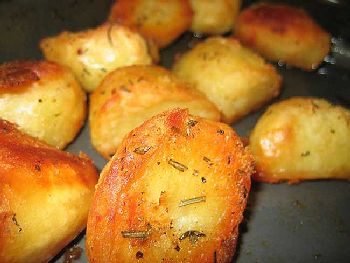 |
 |
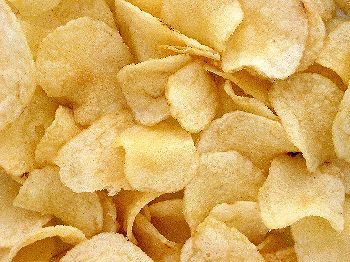 |
Roast potatoes. |
Chips. |
Crisps. |
Are ‘organic’ foods safer?
It’s the type of cooking that causes the acrylamide, together with the presence of carbohydrate. So you are just as likely to get acrylamide formed from organic bread or organic potatoes as from non-organic varieties. Acrylamide is also formed when tobacco is smoked (1-2 µg per cigarette), so smokers are more exposed to acrylamide than non-smokers.
Anyway, why did they look for acrylamide in food in the first place?
During 1997, a railway tunnel was being constructed through Hallandsås, a bedrock ridge on the Bjäre peninsula in southern Sweden, part of a project to build a new line that avoided the gradients involved in the old line over the ridge.
 |
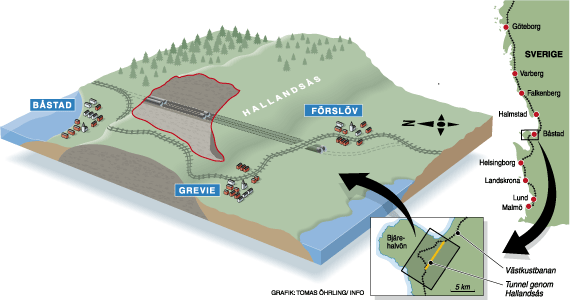 |
The tunnel under construction. | The plan of the Hallandsås tunnel. |
Cows nearby started to show strange symptoms – staggering around, with some collapsing and dying. This prompted an investigation that showed they had been drinking contaminated stream water. The contamination was acrylamide, which originated from the use of polyacrylamide as a crack sealant in the tunnel – the polymerisation process was not complete. Fish in a fish-farm downstream of the tunnel also died. Tests were immediately carried out on construction workers to see if they had unsafe levels of acrylamide. When Margareta Törnqvist of the University of Stockholm examined a control group – who had no known exposure to industrial acrylamide – she found that they had surprisingly high amounts of acrylamide in their blood. First she thought that burgers might be the cause; then she discovered high levels of acrylamide in potato products like fried potatoes, chips (French fries) and crisps.
How is the acrylamide formed?
Acrylamide forms from some sugars and one particular amino acid (asparagine) in a Maillard reaction. Maillard reactions, discovered by Louis-Camille Maillard in 1912, are responsible for the generation of aroma molecules and also the browning of food in cooking.
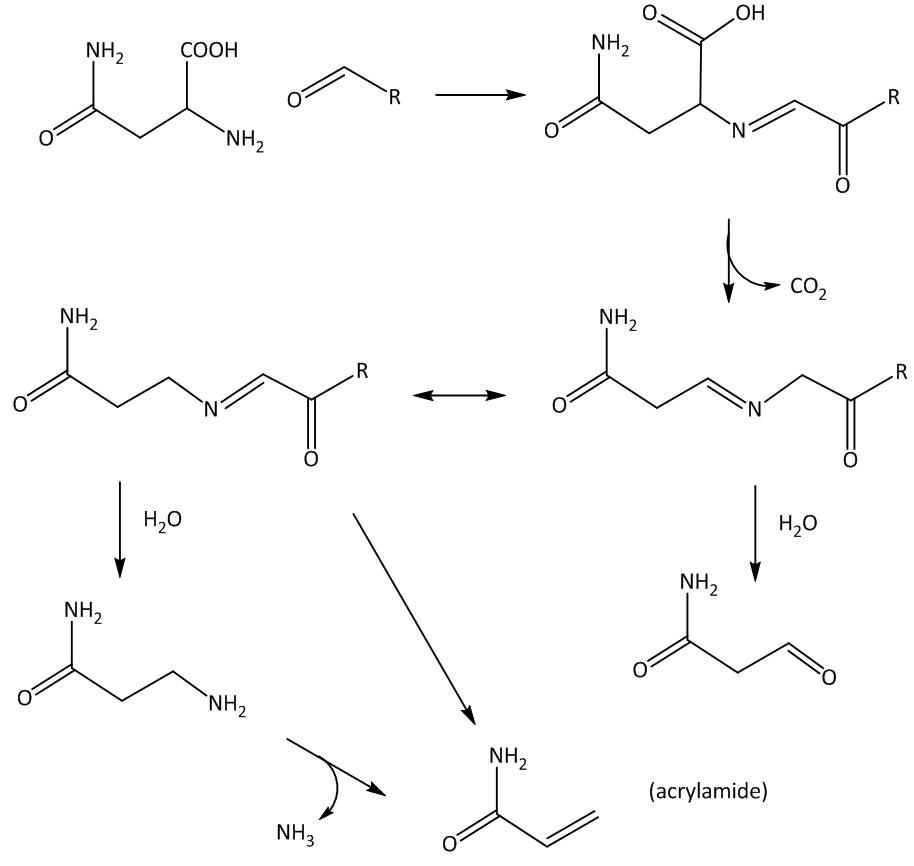
How did they detect the acrylamide?
In the blood, it binds to the N-terminal amino-acid valine in the protein chains of haemoglobin. This test uses a fluorinated Edman reagent (pentafluorophenyl isothiocyanate) to specifically detach the valines, which gives a derivative of N-substituted valines that can be analysed by gas-chromatography mass-spectroscopy (GC-MS).
Does acrylamide get its name from the acrid smells of cooking?
Only indirectly. It is structurally related to the sharp-smelling acrolein (prop-2-enal), which is formed when cooking oil or fat burns. This does have a sharp and unpleasant smell, leading someone to derive its name from the Latin acer (sharp) and olere (smell).
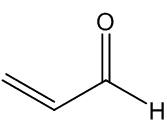
Acrolein
|
|
 What use is acrylamide?
What use is acrylamide?
It is mainly used to make polyacrylamide by polymerising acrylamide – in a similar way to polymerising ethene (MOTM December 2006) or tetrafluoroethene (MOTM June 2009). Its greatest use is in water treatment, with others which include acting as a grouting agent in construction industries. Polyacrylamide is used in applications which include being a flocculating agent to waste-water, when it causes suspended particles in the water to aggregate. Specialist uses include, for molecular biologists, polyacrylamide gel electrophoresis to separate charged molecules, as in the photo, right.

Acrylamide and Polyacrylamide
So should I stop eating foods that are high in acrylamide?
Foods only become high in acrylamide after they are cooked, and how high an acrylamide level depends upon how you cook them. It is only when you cook at above 120ºC that acrylamide levels rise significantly.

Acrylamide concentrations (μg per kg) corrected for weight loss in French-fried potatoes in a temperature=programmed oven.
[Taken from: E. Tareke et al., J. Agric. Food Chem., 2002, 50, 4998]
A ‘golden rule’ has been suggested: cook food until it goes yellow, not brown or black. This restricts acrylamide formation, though if you cook at too low a temperature you are less likely to kill off bacteria, so there is more risk of food poisoning.
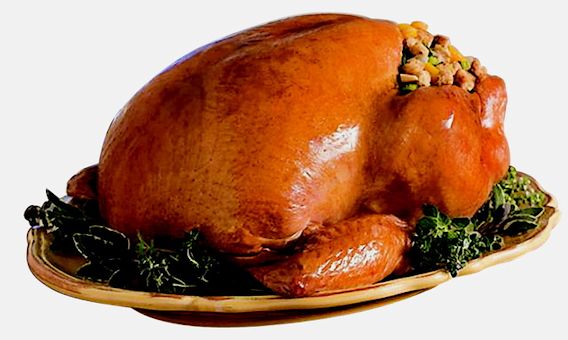 |
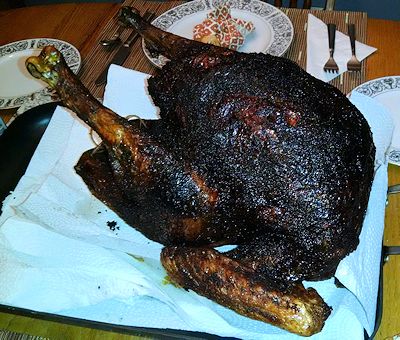 |
A nicely cooked turkey | I'd avoid eating this one, though... |
What actually is the health risk associated with acrylamide?
 |
Acrylamide | Glycidamide |
Concern has centred on acrylamide and its more cytotoxic metabolite, glycidamide, an epoxide of acrylamide formed through the action of P-450 type enzymes; they damage DNA and cause cancer. Acrylamide caused cancer in animals in studies where animals (lab-rats and mice) were exposed to acrylamide at very high doses, some 1000 to 10,000 times normal human exposure levels. Most human studies have shown no increased risk, but there are exceptions. In a 2007 study, increased risks of postmenopausal endometrial and ovarian cancer were associated with increasing dietary acrylamide intake, particularly among people who had never smoked, but the risk of breast cancer was not associated with acrylamide intake. In 2010, the Joint Food and Agriculture Organization/World Health Organization Expert Committee on Food Additives (JECFA) concluded that acrylamide is a human health concern, and counselled more studies. A recent review of available data (2015) concluded: ‘This systematic review and meta-analysis of epidemiological studies indicates that dietary acrylamide is not related to the risk of most common cancers. A modest association for kidney cancer, and for endometrial and ovarian cancers in never smokers only, cannot be excluded.’
So far, it appears that at the levels at which it is produced, acrylamide in food is not a confirmed carcinogen in humans.
However, the USA being the USA (the land of ambulance-chasers) there has been a lawsuit in the US claiming that food manufacturers had failed to warn consumers about the hazards of acrylamide. California’s proposition-65 rule requires warning labels to be placed on products that contain chemicals linked to cancer, so that companies like Dunkin’ Donuts and Seattle’s Best Coffee were liable as they had not labelled their products accordingly. The result was that acrylamide must be labelled in consumer products in California and some manufacturers have agreed to reduce levels of the chemical in their foods.
Is there a downside to this?
If you follow the cooking guidelines, your food may not be as tasty, since grilling, baking or toasting does produce a lot of molecules that enhance flavour. If you have a ‘healthy diet’, with lots of fruit, vegetables and whole grain food, none of which contain acrylamide, things are easier. It is a question of proportion. As Sgt. Phil Esterhaus (played by Michael Conrad) used to say at the daily roll call in the TV programme Hill Street Blues, ‘Let’s be careful out there’.
Oh, by the way, the Hallandsås railway line, including the tunnel, eventually opened in 2015, 20 years after the original forecast for completion. It’s not just the British HS2 railway building project that takes time!

Bibliography
- Chapman and Hall Combined Chemical Dictionary compound code numbers: - DFV27-B (acrylamide); DFV19-A (acrolein)
- US Food Standards Agency report
- European Food Safety Authority report 2015
- HEATOX, Heat-generated food toxicants report, Lund University 2007
- American Cancer Society summary
- E. A. Smith and F. W. Oehme, Rev. Environ. Health 1991, 9, 215-228 (acrylamide and polyacrylamide: a review of production, use, environmental fate and neurotoxicity)
- E. Tareke, P. Rydberg, P. Karlsson, S. Eriksson and M. Törnqvist, J. Agric. Food Chem., 2002, 50, 4998−5006 (first study to report acrylamide levels in cooked foods)
- J. N. Schumacher, C. R. Green, F. W. Best, and M. P. Newel, J. Agric. Food Chem., 1977, 25, 310-320 (acrylamide in cigarette smoke)
- D.S. Mottram, B. L. Wedzicha and A. T. Dodson, Nature, 2002, 419, 448-449; R. H. Stadler, I. Blank, N. Varga, F. Robert, J. Hau, P. A. Guy, M.-C. Robert and S. Riediker, Nature, 2002, 419, 449 (acrylamide is formed in the Maillard reaction)
- J. Rosén and K.-E. Hellenäs, Analyst, 2002, 127, 880–882 (acrylamide in cooked foods)
- H. W. Vesper, J. T. Bernert, M. Ospina, T. Meyers, L. Ingham, A. Smith and G. L. Myers, Cancer Epidemiol. Biomarkers Prev., 2007, 16, 2471 – 2478 (biomarkers in acrylamide and smoking)
- Acrylamide: The food scare the world forgot, New Scientist 19 April 2006.
- Polyacrylamide fact sheet
Acrylmide and diet
- E. J. M. Konings, A. J. Baars, J. D. van Klaveren, M. C. Spanjer, P. M. Rensen, M. Hiemstra, J. A. van Kooij and P. W. J. Peters, Food Chem. Toxicol., 2003, 41, 1569–1579 (acrylamide and Dutch diet)
- K. Svensson, L. Abramsson, W. Becker, A. Glynn, K.-E. Hellenäs, Y. Lind and J. Rosén, Food Chem. Toxicol., 2003, 41, 1581–1586 (acrylamide and Swedish diet)
- M. Murkovic, J. Biochem. Biophys. Methods, 2004, 61, 161–167 (acrylamide in Austrian foods)
- L. Dunovska, T. Cajka and J. Hajslova, Chem. Listy, 2005, 99 (special issue), s279–s280 (acrylamide levels in Czech foods)
- H. Kurebayashi and Y. Ohno, Arch. Toxicol. 2006, 80, 820–828 (acrylamide and its metabolism to glycidamide)
- J. G. Hogervorst, L. J. Schouten, E. J. Konings, R. A. Goldbohm and P. A. van den Brandt, Cancer Epidemiol. Biomarkers Prev., 2007, 16, 2304–2313 (dietary acrylamide intake and the risk of endometrial, ovarian, and breast cancer)
- P. T. Olesen, A. Olsen, H. Frandsen, K. Frederiksen, K. Overvad and A. Tjønneland, Int. J. of Cancer, 2008, 22, 2094–2100 (link with breast cancer; smoking as a major source of acrylamide)
- W. Parzefall, Food Chem. Toxicol., 2008, 46, 1360–1364 (minireview on the toxicity of dietary acrylamide)
- N. G. Halford, N. Muttucumaru, S. J. Powers, P. N. Gillatt, L. Hartley, J. S. Elmore and D. S. Mottram, J. Agric. Food Chem., 2012, 60, 12044−12055 (acrylamide and potato variety)
- I. S. Arvanitoyannis and N. Dionisopoulou, Crit. Rev. Food Sci. Nutr., 2014, 54, 708-733 (review on acrylamide: formation, occurrence in food products, detection methods, and legislation)
- C. Pelucchi , C. Bosetti , C. Galeone and C. La Vecchia, Int. J. Cancer, 2015, 136, 2912–2922 (dietary acrylamide and cancer risk)
- FDA Says To Avoid Yet Another Food Chemical: Acrylamide, Forbes magazine Nov 15th 2013.
Detecting acrylamide
- H. von Stedingk, A. C. Vikström, P. Rydberg, M. Pedersen, J. K. S. Nielsen, D. Segerbäck, L. E. Knudsen and M. Törnqvist, Chem. Res. Toxicol., 2011, 24, 1957–1965
- MAK-Collection for Occupational Health and Safety, Part IV, Biomonitoring Methods Vol. 12, 2010, Wiley, Weinheim, pp 145-167
Acrylamide lawsuit
The Halandsås Tunnel project


 Back to Molecule of the Month page.
Back to Molecule of the Month page.
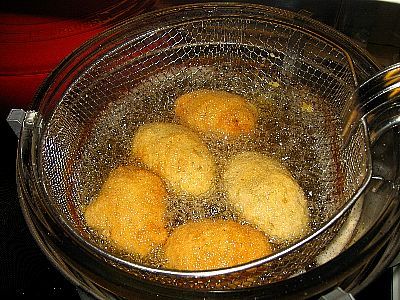
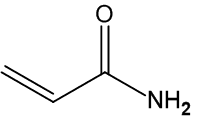
![]()
![]()
![]()
![]()







 What use is acrylamide?
What use is acrylamide?



